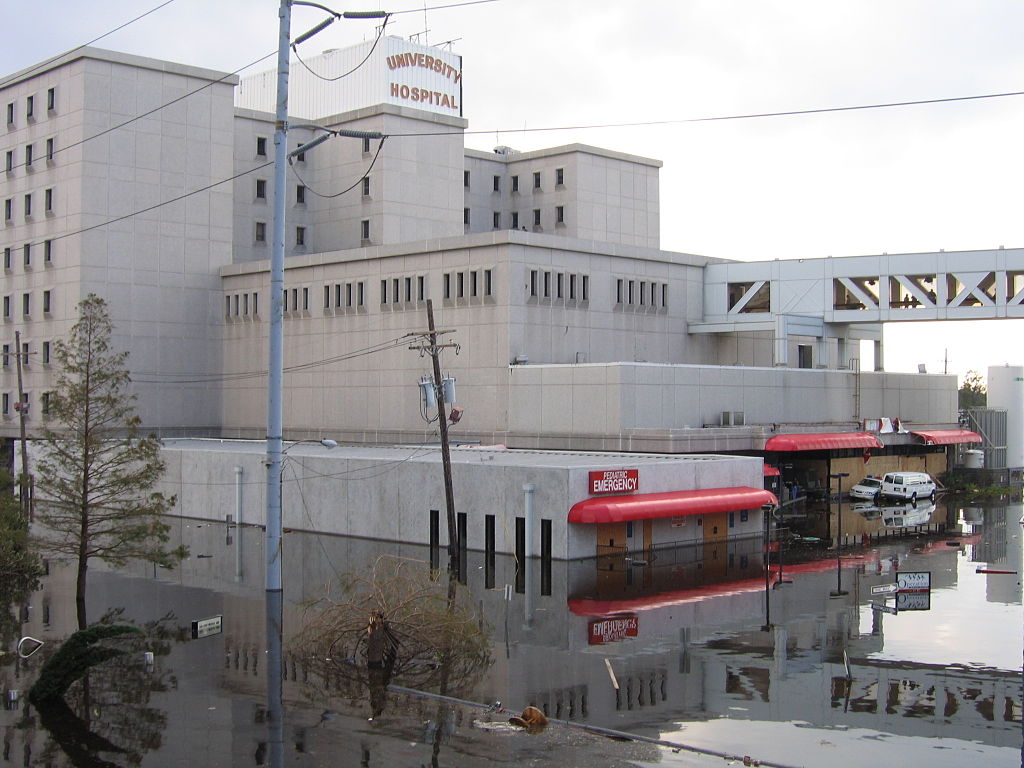Department-level planning and preparedness: A toolkit to assist in full-facility hospital evacuation
DOI:
https://doi.org/10.25071/s7wtd248Abstract
A full-facility hospital evacuation is highly complex and disruptive to ongoing patient care. In certain emergency situations and after careful consideration and exhaustion of other options, the decision to fully evacuate a hospital facility should be made to ensure the safety of all staff, patients, and visitors. Current literature suggests that staff are unprepared for these situations due to a lack of training and experience. Authors of this paper created a departmental-level toolkit to supplement current hospital evacuation policies in order to assist clinical leaders with planning and preparedness for full-facility evacuations. With the support of evidence-based literature from various countries, this paper discusses key concerns identified in previous hospital evacuations including staff shortages, limited formal partnerships, and availability of appropriate resources. By addressing these shortcomings, the organization can develop further resilience against the negative impacts of a full-facility evacuation. Additionally, this paper outlines recommendations for training and exercises programs to further prepare the staff for full-facility evacuations. In the growing field of emergency management, the implementation of additional resources built on evidence-based research is necessary to increase hospital preparedness in the face of emergencies.
References
Adalja, A.A., Watson, M., Bouri, N., Minton, K., Morhard, R.C., Toner, E.S. (2014). Absorbing citywide patient surge during Hurricane Sandy: A case study in accommodating multiple hospital evacuations. Annals of Emergency Medicine, 64(1), 66-73.
Childers, A.K., Visagamurthy, G., Taaffe, K. (2009). Prioritizing patients for evacuation from a health-care facility. Journal of the Transportation Research Board, 2137, 38-45.
Clark, M., Biddinger, P. (2014). MDPH Hospital Evacuation Toolkit. Massachusetts Department of Public Health, Office of Preparedness and Emergency Management.
Fairchild A.L., Colgrove, J., Jones, M.M. (2006). The challenge of mandatory evacuation: Providing for and deciding for. Health Affairs, 25(4), 958-67.
Fuzak, J.K., Elkon, B.D., Hampers, L.C., Polage, K.J., Milton, J.D., Powers, L.K., Percell-de’Shong, K., Wathen, J.E. (2010). Mass transfer of pediatric tertiary care hospital inpatients to a new location in under 12 hours: Lessons learned and implications for disaster preparedness. The Journal of Pediatrics, 157(1), 138-43.
Haynes, K., Coates, L., Leigh, R., Handmer, J., Whittaker, J. Gissing, A., Mcaneney, J., Opper, S. (2009). Shelter-in-place vs. evacuation in flash floods. Environmental Hazards, 8(4), 291-303.
Hicks, J. & Glick, R. (2015). A meta-analysis of hospital evacuations: Overcoming barriers to effective planning. Journal of Healthcare Risk Management, 34(3), 26-36.
Kinman, T. (2019). Facility evacuation decision guidance. Health Facilities Management. https://www.hfmmagazine.com/articles/3623-facility-evacuation-decision-guidance
Levinson, D. R. (2014). Hospital emergency preparedness and response during superstorm sandy (U.S.A., Department of Health and Human Services, Office of Inspector General). Washington, D.C.: U.S. Dept. of Health and Human Services.
Petinaux, B. & Yadav, K. (2013). Patient-driven resource planning of a health care facility evacuation. Prehospital and Disaster Medicine, 28(2), 120-26.
Sawano, T., Shigetomi, S., Ozaki, A., Nishikawa, Y., Hori, A., Oikawa, T. Maeda, M., Tsubokura, M. (2021). Successful emergency evacuation from a hospital within a 5-km radius of Fukushima Daiichi Nuclear Power Plant: the importance of cooperation with an external body. Journal of Radiation Research, (62)S1, il22-il28.
VanDevanter, N., Ravels, V.H., Kovner, C.T., McCollum, M., Keller, R. (2017). Challenges and resources for nurses participating in a Hurricane Sandy hospital evacuation. Journal of Nursing Scholarship, (49)6, 635-43.
Wong, S-K., Wang Y-S., Tang, P-K., Tsai, T-Y. (2017). Optimized evacuation route based on crowd simulation. Computational Visual Media, 3(3), 243-61.
Yaghoubi T, Ardalan A, Ebadi A, Nejati A, Khorasani-Zavareh D. (2021) Exploring factors affecting the decision of emergency hospital evacuation in disasters: A qualitative study. Journal of Nursing and Midwifery Sciences 2021; 8:27-33
Zane, R., Biddinger, P., Hassol, A., Rich, T., Gerber, J., DeAngelis, J. (2010). Hospital evacuation decision guide. Agency for Healthcare Research and Quality, Publication No. 10-0009.

